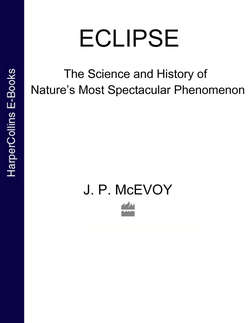Читать книгу Eclipse: The science and history of nature's most spectacular phenomenon - J. McEvoy P. - Страница 23
DISCOVERIES OF LATE BABYLONIAN ASTRONOMY
ОглавлениеAnother aspect of the Chaldeans’ astronomy was their ability to use their extensive catalogue of celestial observations. While the watch-keepers continued to search the heavens for omens, astronomers were able to develop a mathematical theory from their study of the records. Their analysis of the records of ancient observations suggested the possibility of creating models of the movement of the Sun and the Moon. From these models, astronomers would then be able to predict future astronomical phenomena. Once they had seen this possibility, the Chaldeans realised that they needed better accuracy in their observations. As early as 1000 BC their scribes had recognised eighteen constellations, groups of stars forming recognisable patterns in the sky. By 500 BC these constellations were systemised and identified, singly or sometimes in pairs, with the twelve lunar months as the Moon, Sun and the planets moved through the sky. For example, the second month of the Babylonian year, corresponding to mid-April to mid-May, had symbols of both Taurus and the Pleiades; the third month, Gemini and Orion; and the twelfth month, Pisces and Pegasus.
In order to introduce firm delineations for the purposes of astronomical diaries and observations, the ecliptic path along which the Sun moves was divided into twelve equal parts of 30°. This was called the zodiac, from the word for ‘animal’ – most zodiacal figures are animals or people. The first evidence of the use of this zodiac in a diary is from 464 BC, and by about 400 BC the zodiacal constellations had been clearly defined, beginning with Aries for the first month, corresponding to mid-March to mid-April. This system of zodiac constellations has lasted essentially unchanged to the present day, both for the science of astronomy and the pseudoscience of astrology.
